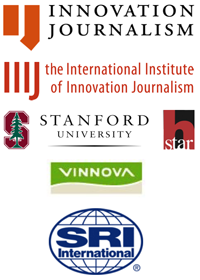Hey, you think that two weeks is a long wait for the latest Apple MacBook to get into stores?
Well, that is nothing compared to how long – 18 months – that Governor Arnold Schwarzenegger, actor George Clooney and Google's Larry Page have waited for the first all-electric sports car ever to be sold in the U.S.
The sleek $100,000 Tesla sports car goes into production on Monday – with actual deliveries starting in a few weeks. The arrival of the car, offered by a closely-watched company in San Carlos, California, will delight the many celebrities who have ordered it. The Tesla Roadster represents a new trend in electric vehicles, the merger of automotive engineering with the ethos and elan of Silicon Valley.
"The company that we strive to emulate is Apple,” says Daryl Siry, Vice President of Sales, Marketing and Service at Tesla Motoros. “We want to be a company that innovates not only on the tech side but also on the design side. It is about developing cars but also about customer experience.”
While Siry's comparison between an all-electric sports car and an Apple's product line might seem like a stretch, Tesla's car is unquestionably a breakthrough, offering the equivalent of 100 miles to the gallon – and a driving range of 220 miles before a re-charge – for roughly the same price of a conventional Porsche 911 sports car.
One morning earlier this week, a silver Tesla is parked by the entrance of the company's headquarters. The car is receiving an electric charge from a thick electric cord plugged into a socket on its left side, where normally gasoline might go.
The car being charged in the morning sun is a prototype Tesla. Not only cars are getting charged this morning, which happens to be the day when one of the company's engineers arrives with plate after plate of freshly baked cookies – hundreds of them in all, more than enough to satisfy the 180 people who work at Tesla's main office.
“Making an all-electric car go fast is the easiest challenge,” says Mr. Siry, Tesla. “Making it go far is the challenge.”
Unlike other electric cars, Tesla's model does not have a traditional lead-acid battery. Instead, it runs on a lithium-ion battery that is lighter and longer-lasting. Nevertheless, the car will need to pause for a refill halfway between San Francisco and Los Angeles.
Delays in producing its first car – production was supposed to begin last October but the company fell behind schedule after deciding to use a different transmission – have fanned skepticism about whether Silicon Valley, home to computer and Internet companies, really can nurture a new automobile maker. Tesla wants to prove the doubters wrong.
“Some are very skeptical about people in Silicon Valley producing cars,” Mr. Siry admits. “And sure, building vehicles is something very hard.”
The automobile industry operates under strict government regulation, a stark contrast with the computer and software industries, where new products can be released with serious flaws and then later be fixed with relatively painless "upgrades".
“With things like the iPhone you can just go ahead without checking with anyone,” says Mr. Siry.
Tesla is also breaking the mold by planning to build only small batches of its sport car, treating it like a fine wine rather than a mass-produced laptop computer. The company plans to produce 600 cars this year – all purchased already, Mr. Siry says – and another 1,200 next year.
Small volumes are possible because of Tesla's six-figure price – a price likely to increase over time. As a result, the company can earn money while remaining a speciality producer.
“Break-even is between 1,000 and 2,000 cars a year,” Mr. Siry says, about the sports car. He says the company also plans a 4-door passenger sedan, perhaps as early as 2010. That car, he predicts, will cost between $50,000 and $70,000.
The car's high prices comes partly from its lithium-ion battery. Each one costs about $20,000, or about one-fifth of Tesla's price. Demand for lithium-ion batteries, widely used in computers, currently exceeds supply, which explains the high prices for them. The Tesla Roadster uses more than 6,000 individual lithium battery cells, a staggering number, more than a thousand times the number used in a laptop.
On a recent visit to Tesla, a couple of engineers chat quietly as they charge five prototype vehicles in the company's small assembly area. The sports cars glimmer in colorful shades of red, orange, green and blue. They resemble big Apple iPods, the difference being that these cars are ready to take you on a 125 mph ride down Highway One.
Tesla still faces issues with its new transmission, which runs only in a single gear (most gasoline-powered cars have four or five gears). The single gear permits fast acceleration.
“It is going to take us another three or four months to start production with the new transmission system." Mr. Siry says.
The cars going into production on Monday are built on the old transmission system with two gears. Tesla is going to offer owners of the first few dozen cars the chance to swap out the old transmission and get the new one.
“It is only going to impact 30 or 40 people and we did not want to wait any longer with the launch,” says Mr. Siry. “The decision to start production with an interim transmission was not a response to critics. It was a response to customers who said, ‘give us the damn car.’”
Thursday, March 13, 2008
Apple Inspires Tesla's All-Electric Sports Car
Subscribe to:
Post Comments (Atom)



1 comment:
Way to go C,
This is a Book. A book about the future for cars and for mankind transports in style.
When do you start?
Post a Comment